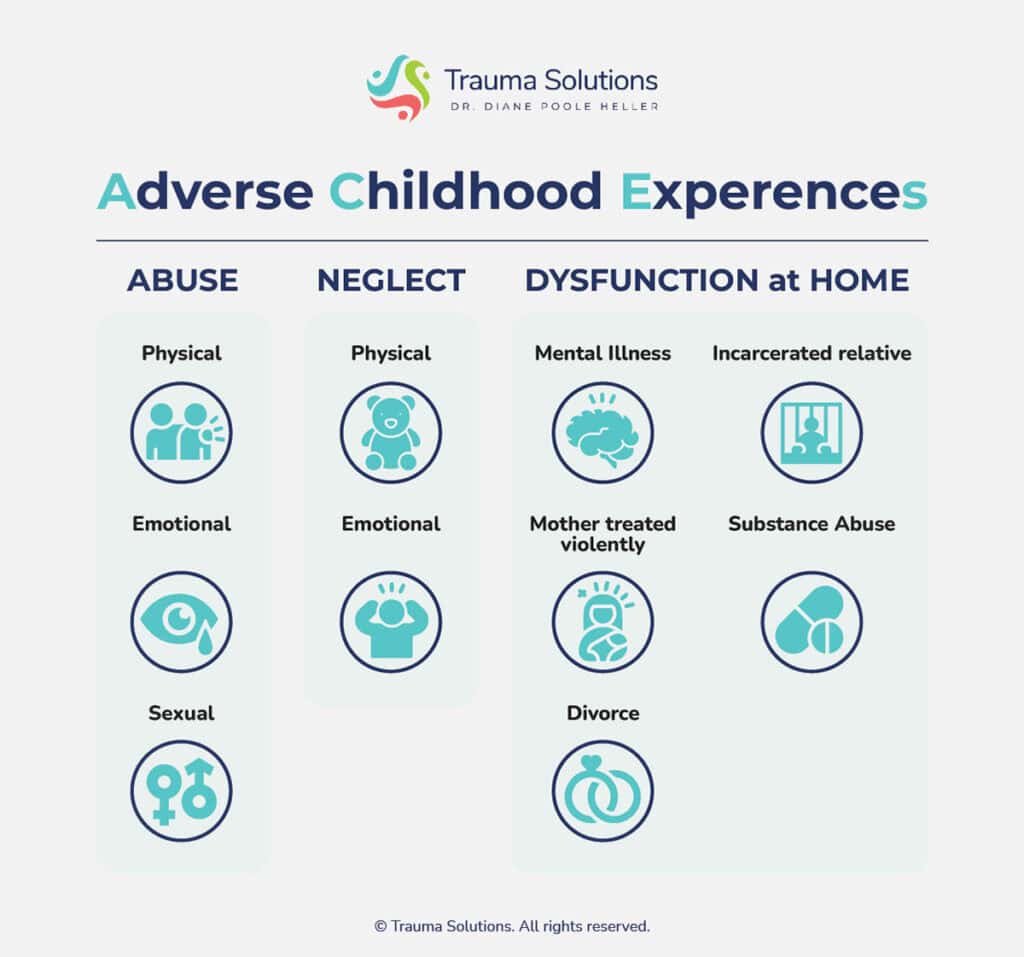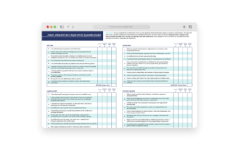The groundbreaking Adverse Childhood Experiences (ACE) study, conducted by the CDC and Kaiser Permanente in the mid-1990s, revolutionized our understanding of the long-term effects of childhood trauma on adult health and well-being.
Over 17,000 participants completed confidential questionnaires about their childhood experiences, including exposure to abuse, neglect, domestic violence, and other traumatic stressors. In this article, we’ll examine the ACE study’s key findings, explore its implications for treating trauma, and discuss practical strategies for applying this knowledge in therapy.
Table of Contents
Understanding the ACE Study and Why It’s Important for Treating Trauma
Share this Article:
Top Picks for You:
- The Four Attachment Styles: Secure, Avoidant, Ambivalent, and Disorganized
- Toxic Shame: What Is It & What to Do About It
- The Power of Trauma-Informed Care: Understanding What Happened to You
- Somatic Resilience: Overcoming Early Trauma (with Peter A. Levine, PhD)
- Neuroplasticity: Rewiring the Traumatized Brain
Overview of the ACE Study
The ACE study was conducted in two waves, from 1995 to 1997, and is one of the largest investigations of the link between childhood maltreatment and health and well-being later in life.
Participants completed a 10-question survey about their childhood experiences, underwent a physical exam, and answered a questionnaire about their current behaviors and health status. The ACE study covered ten types of adverse experiences, broken in three categories:

Participants received an “ACE Score” based on the number of adverse experiences they reported.
The study’s findings revealed a startling link between higher ACE scores and increased risk for a wide range of physical and mental health problems later in life, including heart disease, diabetes, substance abuse, depression, and suicidality.
However, implications of the ACE study extend beyond the realm of public health and are significant for mental health professionals. By understanding the potential long-term effects of child adversity and trauma, therapists can develop more effective, trauma-informed approaches to treatment that address the root causes of their clients’ struggles.
Key Findings of the ACE Study
The Adverse Child Experiences study found that ACEs were remarkably common, with over 60% of participants reporting at least one ACE––and more than 20% reporting three or more.
The most prevalent experiences were household substance abuse, parental separation or divorce, and mental illness within the household.
Findings showed a “dose-response” relationship between ACEs and negative health outcomes—meaning that as the number of ACEs increased, so did the risk for numerous health problems.
Compared to individuals with no ACEs, those with four or more ACEs were:
- More likely to experience current alcoholism, drug abuse, depression, and suicide attempts
- More likely to smoke, have poor self-rated health, and develop sexually transmitted infections
- More likely to experience physical inactivity, high blood pressure, and obesity
Furthermore, ACEs were found to be strongly interrelated. Having one ACE increased the likelihood of experiencing additional ACEs, a phenomenon known as polyvictimization.
While these findings highlight the importance of early intervention and prevention efforts to mitigate childhood adversity, they also underscore the profound and far-reaching consequences of early experiences on health and well-being throughout life.

The Link Between ACEs and Health Outcomes
The ACE study revealed a strong connection between childhood experiences and a wide range of negative health outcomes in adulthood. Participants with higher ACE scores were found to be at increased risk for both physical and mental health challenges.
In terms of physical health, the study found that individuals with four or more ACEs were significantly more likely to develop chronic conditions such as heart disease, diabetes, and obesity.
Chronic stress and trauma experienced during childhood can dysregulate the body’s stress system, leading to inflammation and other physiological changes that contribute to the development of chronic diseases like heart disease, diabetes, and autoimmune conditions.
The ACE study also highlighted the significant effect of childhood adversity on mental health. Individuals with higher ACE scores were more likely to struggle with depression, anxiety, and substance abuse.
Adverse childhood experiences can disrupt the formation of secure attachment to caregivers, leading to attachment adaptations that persist into adulthood.
Further research has shown early life stressors can alter brain development and affect the autonomic nervous system, contributing to difficulties with emotional regulation and impulsivity.
One striking finding of the ACE study was the long-term nature of these health effects. The negative outcomes associated with ACEs persisted well into childhood or adolescence, often decades after the adverse experiences occurred. This highlights the need for early intervention, as well as ongoing support for individuals who have experienced childhood trauma.
Furthermore, the ACE study demonstrated that the effects of childhood adversity are cumulative. Each additional ACE increased the risk of negative health outcomes.
This underscores the importance of addressing the full range of a client’s adverse experiences in therapy, rather than focusing on a single traumatic event.
By understanding the complex and wide-ranging effects of ACEs on physical and mental health, therapists can develop more targeted and effective interventions for clients with a history of childhood trauma.
Implications for Treating Trauma
The ACE study findings have significant implications for the treatment of trauma, especially attachment and developmental trauma experienced in childhood.
Additional research by Dr. Bessel van der Kolk highlights the relationship between developmental trauma and post-traumatic stress disorder.
Children who face early life adversity may be more vulnerable to later experiencing shock trauma—isolated traumatic incidents—in addition to the relational and mental health consequences of attachment injury and relational dysfunction.
This means therapists should be skilled at treating both developmental and shock trauma to support their clients effectively. Here are a few strategies to consider:
- Prioritize Safety and Stabilization
- Create a safe and supportive therapeutic environment that promotes secure attachment.
- Incorporate grounding and mindfulness techniques to help clients feel safe in their bodies.
- Teach self-regulation skills to help clients manage overwhelming emotions and sensations.
- Address Somatic Symptoms
- Use body-based approaches, such as sensorimotor psychotherapy, or trauma-informed yoga, to find relief from physical symptoms of trauma.
- Incorporate gentle movement practices, sound therapies, or breathing exercises to calm the body and regulate the nervous system.
- Process Traumatic Memories
- Once clients have developed a sense of safety and stability, work on processing traumatic content using evidence-based, trauma-informed approaches.
- Consider attachment-focused approaches, such as attachment-focused EMDR or the DARe approach, to address relational trauma and promote secure attachment.
- Nurture Resilience and Self-Regulation
- Teach clients skills for emotional regulation, distress tolerance, and social engagement.
- Encourage the development of positive coping strategies and self-care practices.
- Help clients identify and build on their strengths to promote resilience and self-efficacy.
By addressing the relational, emotional, and physiological aspects of trauma, therapists can help their clients develop greater self-regulation, resilience, and the capacity for healthy, secure relationships, regardless of early experience.





Ready to Begin Your Healing Journey?
Browse on-demand courses and begin learning from top experts today!


